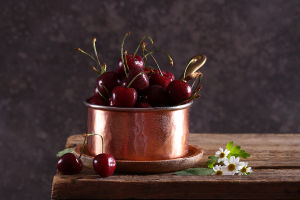Flowers can bring health and a good mood to people. Planting flowers and plants in the home can also add a green atmosphere to the home. However, although growing flowers is very interesting, maintenance must be skillful, and watering flowers is one of them.
1. Water according to the dryness and humidity of the potting soil
Watering according to the dry humidity of the potting soil is the simplest and most practical method, and it is also the most favorable watering method for the growth of potted plants, because the flowers and plants placed outdoors can absorb rainwater and dew from the natural environment, so the basic It is better to water when it is dry.
2. Water according to different seasons
The climatic characteristics of the four seasons are different. In spring, the air humidity is high and the precipitation is sufficient. The outdoor flowers and plants hardly need watering. The summer temperature is high, watering can only be carried out in relatively cool mornings and nights, and proper shading and ventilation can ensure a smooth summer.
In winter, the ambient temperature is low and water evaporation is slow. Watering should be carried out during the noon time period with sufficient sunlight as much as possible, and the watering frequency should also be reduced. Keeping the ambient temperature above 5 ℃ is more conducive to a smooth winter.
3. Water according to plant growth habit
Each flower and grass has its own growth cycle and growth habit. Flowers and grasses that like moist can keep the potting soil slightly moist, and potted plants that like dry can not be watered when they are not dry. Moreover, potted plants generally require slightly more water and nutrients during the vigorous growth period and flowering period, and relatively less water demand during the dormant period.
After understanding the selection basis for watering plants, we also need to know that different flowers have different requirements for water. Therefore, it is difficult to grasp the skills of watering. Let's take a look at several watering methods.
1. Bottom irrigation method
Put 3-5 cm of water in a pot, put the flower pot in, and let the water wet the soil through the bottom hole of the pot, which is good for preventing soil compaction and promoting root development.
However, the salt in the soil will rise with water and accumulate on the soil surface and the edge of the pot, which will burn the nearby rhizomes. Therefore, it is best to use this method alternately with other methods for potted flowers.
2. Watering method
When watering with a shower can, if the water is sprinkled on flowering plants, it will cause poor flowering and flower buds to rot due to water immersion. So be sure not to pour water directly on the flowers, but on the roots of the plants. But for green leafy plants, such as unblooming ocean orchids, it can be sprinkled on the branches and leaves.
3. Fiber water absorption method
A cloth strip or fiber absorbent rope can be buried in the basin soil, and the cloth strip or rope can be placed in the bottom basin, and the water in the bottom basin can be absorbed into the basin to keep the basin soil moist.
If you are going out for a few days, you can use this method when no one is watering. Of course, it is best to use a basin to hold the water and place it in a suitably high position, so that the water can be easily passed down.
4. Water spray method
Use a pressure spray can to create water mist, spray on the potted flowers, and increase the humidity of the small environment. In addition to absorbing water in the soil by root hairs, flowers can also absorb water in the air. The amount of moisture in the air is called air humidity, which plays an important role in the growth of flowers.
If the air humidity in the environment where flowers are cultivated is not enough, and the potting environment is too dry, the appearance of the flowers will look dull, and the new branches and leaves will not be vigorous. The air humidity that flowers need cannot be solved by watering the soil. Instead, it relies on frequent spraying of water on flower branches and leaves. This can not only improve the air humidity requirements of flowers, but also keep flowers and leaves clean


